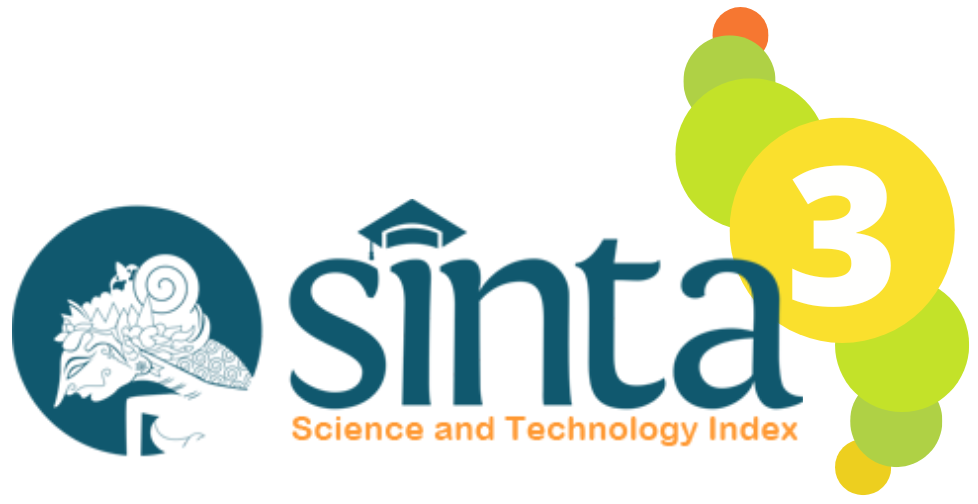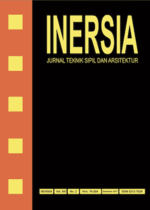3-Dimensional Numerical Simulation of Nailed Slab System Settlement Behavior on Soft Soil
DOI:
https://doi.org/10.21831/inersia.v18i2.48375Keywords:
Nailed Slab, Settlement, RS3Abstract
The design of the YIA airport rail line is on soft soil with a depth of 12-16 m. The design of the rail line uses a 4 m high embankment. Reinforcement is carried out by the method of a nailed slab system. The nailed slab system consists of a monolithically connected slab and pile. This method is believed to be able to reduce the settlement that occurs in the foundation soil effectively. This study aims to determine the effect of using a nailed slab system that varies in length, distance, and arrangement. The data used are boring and laboratory tests. Effect of variations in length (8 m; 10 m; 12 m and 14 m), distance (0.8 m; 1.2 m; 1.6 m; and 2 m), and pile arrangement (uniform; V and W) on soil settlement foundation is done with the RS3 program. The results showed that each additional 2 m of pile length could reduce the total settlement by 48.63%-82.31% of the unreinforced foundation soil. The decrease in permits was fulfilled at the length of the piles of 12 m and 14 m. Pile spacing of 0.8 m, 1.2 m, 1.6 m, and 2 m reduced the total settlement by 69.47%, 68.78%, 67.22%, and 60.90%, respectively. On piles with a length of 12 m, distances of 0.8 m and 1.2 m fulfilled the allowable reduction. The use of the V arrangement gave the greatest reduction of 71.77% while the uniform arrangement was 68.78% and the W arrangement was 68.56%. The use of a nailed slab system as foundation soil reinforcement due to embankment load can reduce settlement effectively.
References
Departemen Permukiman dan Parasarana Wilayah, "Panduan Geoteknik 1 Proses Pembentukan dan Sifat-sifat Tanah Lunak," Pedoman Kimpraswil No Pt T-8-2002-B, no. 1, p. 162, 2002.
Pusat Litbang Prasarana Transportasi, "Panduan Geoteknik 4 Desain dan Konstruksi," Pus. Litbang Prasarana Transp., no. 1, 2001.
H. C. Hardiyatmo, Analisis dan Perancangan Fondasi II, 4th ed. Yogyakarta: Gadjah Mada University Press, 2018.
H. C. Hardiyatmo, Mekanika Tanah 2, 6th ed. Yogyakarta: Gadjah Mada University Press, 2019.
A. Sinha and A. M. Hanna, "3D Numerical Model for Piled Raft Foundation," Int. J. Geomech., vol. 17, no. 2, p. 04016055, 2017, doi: 10.1061/(asce)gm.1943-5622.0000674.
S. Mali and B. Singh, "3D Numerical Modeling of Large Piled-Raft Foundation on Clayey Soils for Different Loadings and Pile-Raft Configurations," Stud. Geotech. Mech., no. December, 2019, doi: 10.2478/sgem-2019-0026.
Badan Standarisasi Nasional, "Sni 8460-2017," Persyaratan Peranc. Geotek., vol. 8460, p. 2017, 2017.
K. C. Foye, P. Basu, and M. Prezzi, "Immediate Settlement of Shallow Foundations Bearing on Clay," Int. J. Geomech., vol. 8, no. 5, pp. 300–310, 2008, DOI: 10.1061/(ASCE)1532-3641(2008)8:5(300).
A. Puri, H. C. Hardiyatmo, B. Suhendro, and A. Rifa'i, "Perilaku Perkerasan Sistem Pelat Terpaku pada Tanah Lunak," Prosidin Konf. Nas. Pascasarj. Tek. Sipil 2015, pp. 1689–1699, 2015.
R. B. Brinkgreve, E. Engin, and W. M. Swolfs, Plaxis 3D 2015 Manual, 1st ed. Netherlands: Plaxis, 2015.
D. Waterman, Structural elements in Plaxis, 1st ed. Rotterdam: A.A alkema Publisher, 2006.
H. Zhou, G. Zheng, J. Liu, X. Yu, X. Yang, and T. Zhang, "Performance of embankments with rigid columns embedded in an inclined underlying stratum: centrifuge and numerical modelling," Acta Geotech., vol. 14, no. 5, pp. 1571–1584, 2019, DOI: 10.1007/s11440-019-00825-7.
F. Azizi, Applied Analyses in Geotechnics. New York: E & FN Spon, 2000.
Downloads
Published
How to Cite
Issue
Section
License
Authors who publish with INERSIA journal agree to the following terms:
- Authors retain copyright and grant the INERSIA journal right of first publication with the work simultaneously licensed under Creative Commons Attribution License (CC BY 4.0) that allows others to share the work with an acknowledgment of the work's authorship and initial publication in this journal.
- Authors can enter into separate, additional contractual arrangements for the non-exclusive distribution of the published version of the work (e.g., post it to an institutional repository or edit it in a book), with an acknowledgment of its initial publication in this journal.
- Authors are permitted and encouraged to post their work online (e.g., in institutional repositories or on their website) before and during the submission process, as it can lead to productive exchanges, as well as earlier and greater citation of published work.

INERSIA by https://journal.uny.ac.id/index.php/inersia was distributed under a Creative Commons Attribution 4.0 International License







